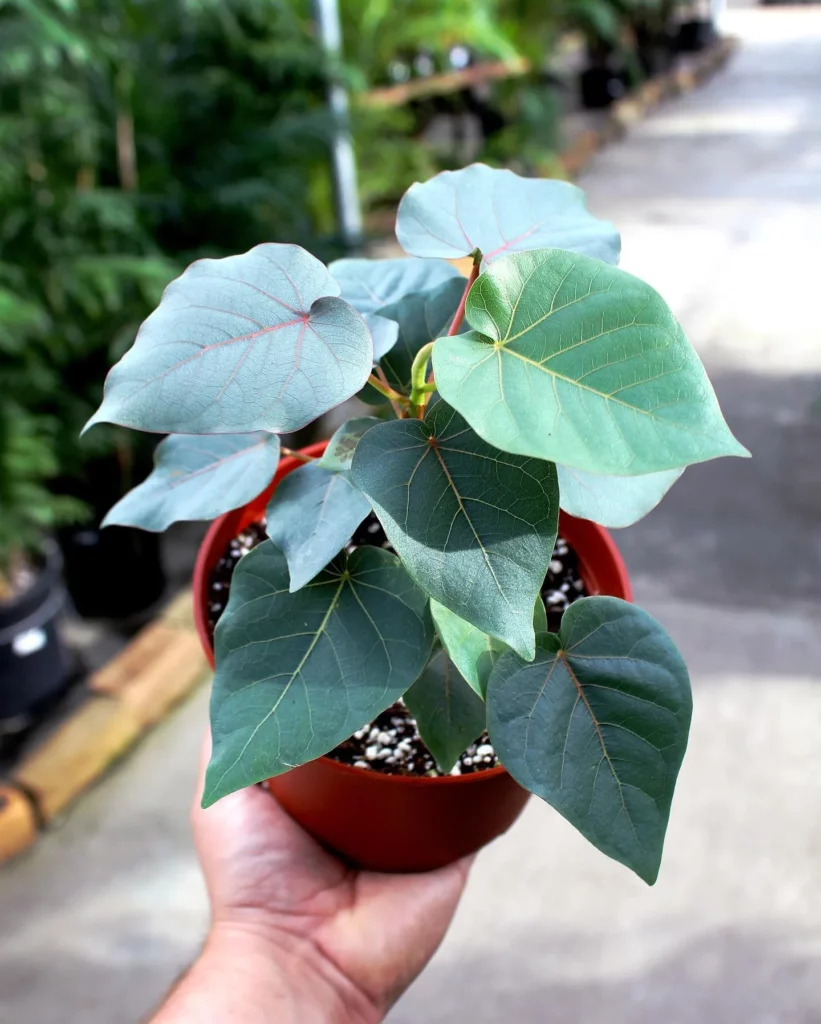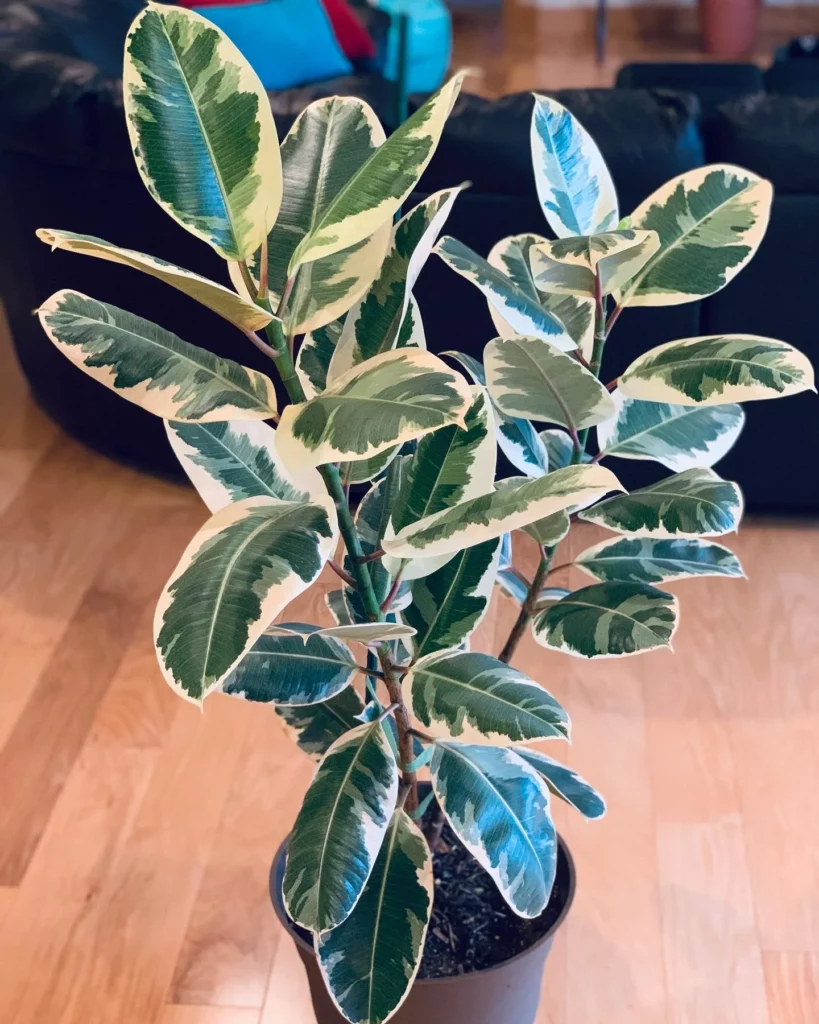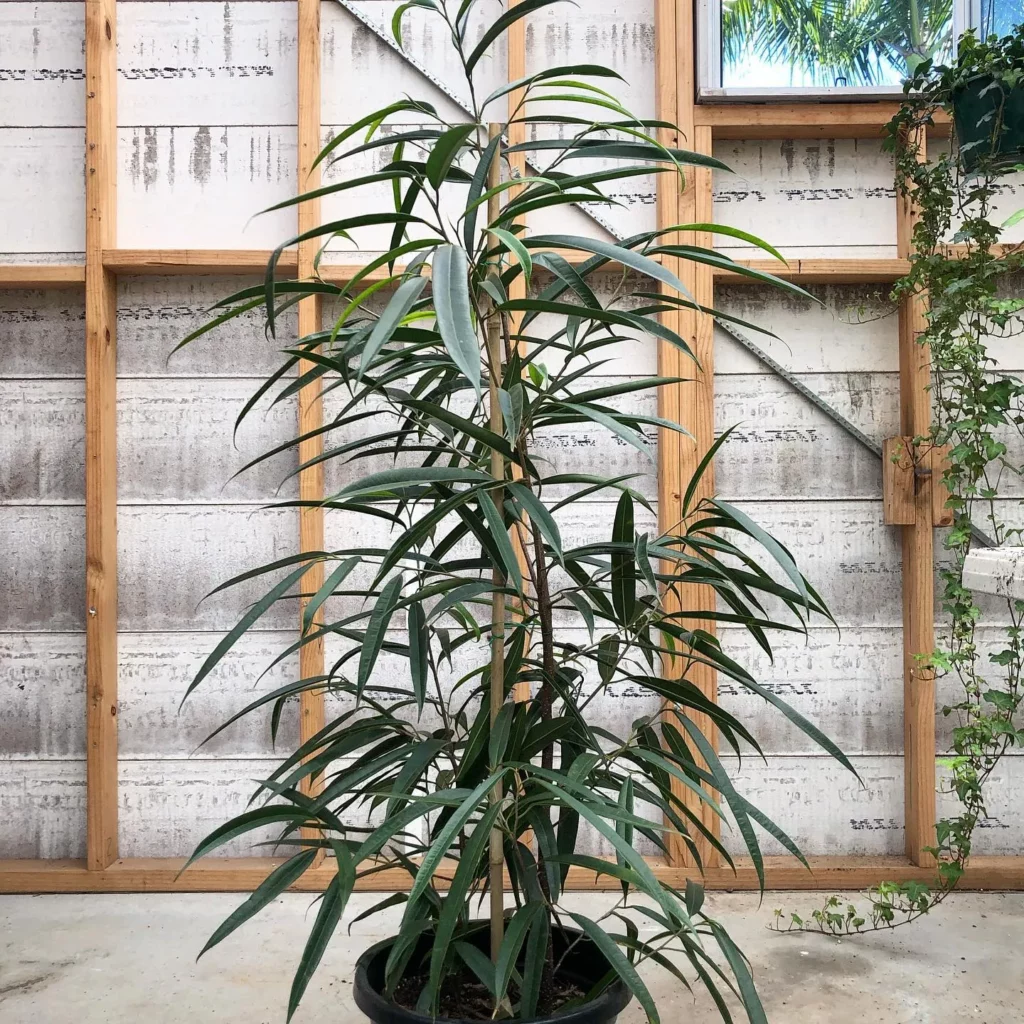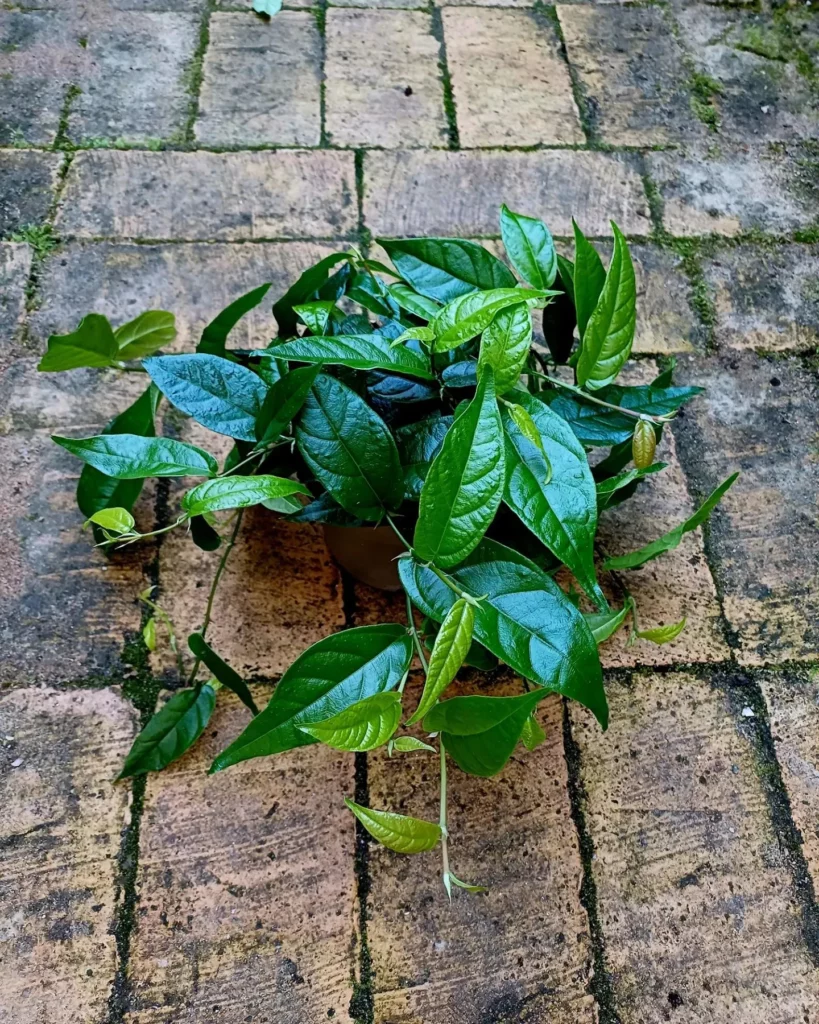Ficus petiolaris, also known as Rock Fig or Petiolate Fig, is a fascinating plant native to arid regions of Mexico. With its heart-shaped green leaves adorned with pink veins, this plant adds a touch of natural beauty to any space.
As part of the fig family, Ficus petiolaris is known for its unique growth habit, captivating appearance, and relatively easy care requirements.
A Brief Overview of Ficus petiolaris
Ficus petiolaris is a sturdy and versatile plant that can thrive both indoors and outdoors, making it an excellent choice for various environments.
Its woody stems and branches create an interesting architectural element, while its lush foliage adds a vibrant touch to any setting. This plant can grow up to 10-20 feet tall, making it an ideal choice for filling vertical spaces in your garden or creating a statement piece indoors.
Native Habitat and Growing Conditions
Ficus petiolaris is native to the arid regions of Mexico, where it naturally adapts to the dry and sunny conditions. It thrives in moderate sun and partial shade, making it suitable for a variety of lighting conditions.
While this plant can tolerate dry spells, it’s important to provide consistent watering to ensure its optimal health. Well-drained soil or potting mix is recommended to prevent waterlogging, which can lead to root rot.
Growing Ficus petiolaris
Caring for Ficus petiolaris involves providing the right environment, proper watering, and occasional pruning. This plant requires moderate water, allowing the soil to dry slightly between waterings.
Pruning Ficus petiolaris is essential to encourage lateral branching and maintain a desirable shape. When pruning, wear garden gloves as the branches leak milky sap when cut.
With the help of this ultimate care guide, you’ll be equipped with the knowledge to nurture your Ficus petiolaris and enjoy its beauty for years to come.
How to Grow Ficus petiolaris
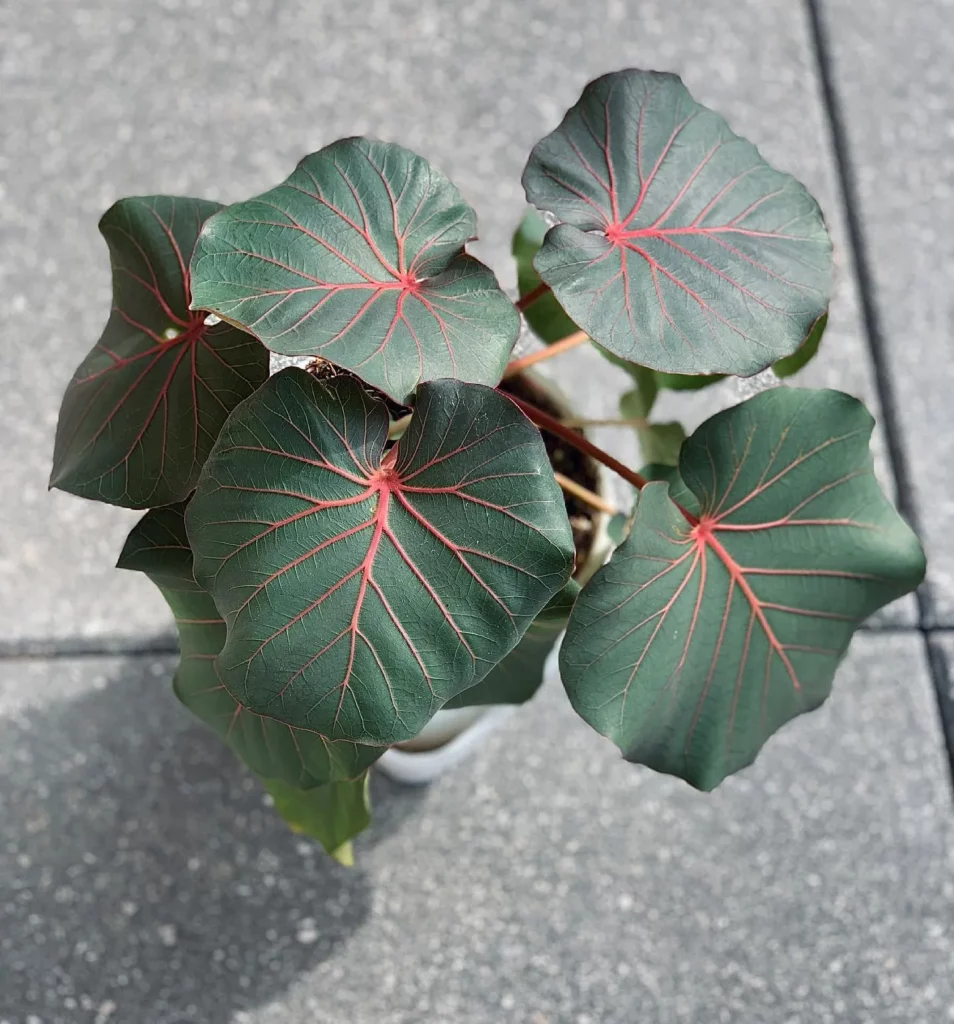
Growing Ficus petiolaris is a rewarding experience, and with the right knowledge and care, you can help your plant thrive and flourish. This section will provide you with essential tips and guidance on properly nurturing your Ficus petiolaris, also known as Rock Fig.
1. Selecting the Right Location: Ficus petiolaris thrives in moderate sun to partial shade, making it ideal for indoor spaces with bright, indirect light. Choose a spot away from drafts and extreme temperature fluctuations.
2. Preparing the Soil: Ficus petiolaris prefers well-drained soil or potting mix. Ensure the soil is loose, rich in organic matter, and allows excess water to drain properly. This will help prevent root rot and promote healthy growth.
3. Proper Watering Techniques: Consistent watering is crucial for Ficus petiolaris. While it prefers slightly moist soil, be sure to avoid overwatering as it can lead to root rot. Wait for the top inch of soil to dry before watering again, but do not let the soil completely dry out between waterings.
| Watering Tips: | Ficus petiolaris Watering Guide |
|---|---|
| 1. Use your finger to test the soil moisture level. | Water when the top inch of soil is dry. |
| 2. Water thoroughly but avoid waterlogging. | Allow excess water to drain out. |
| 3. Adjust watering frequency based on the season and environment. | Hotter, drier conditions may require more frequent watering. |
Propagation Tips for Ficus petiolaris
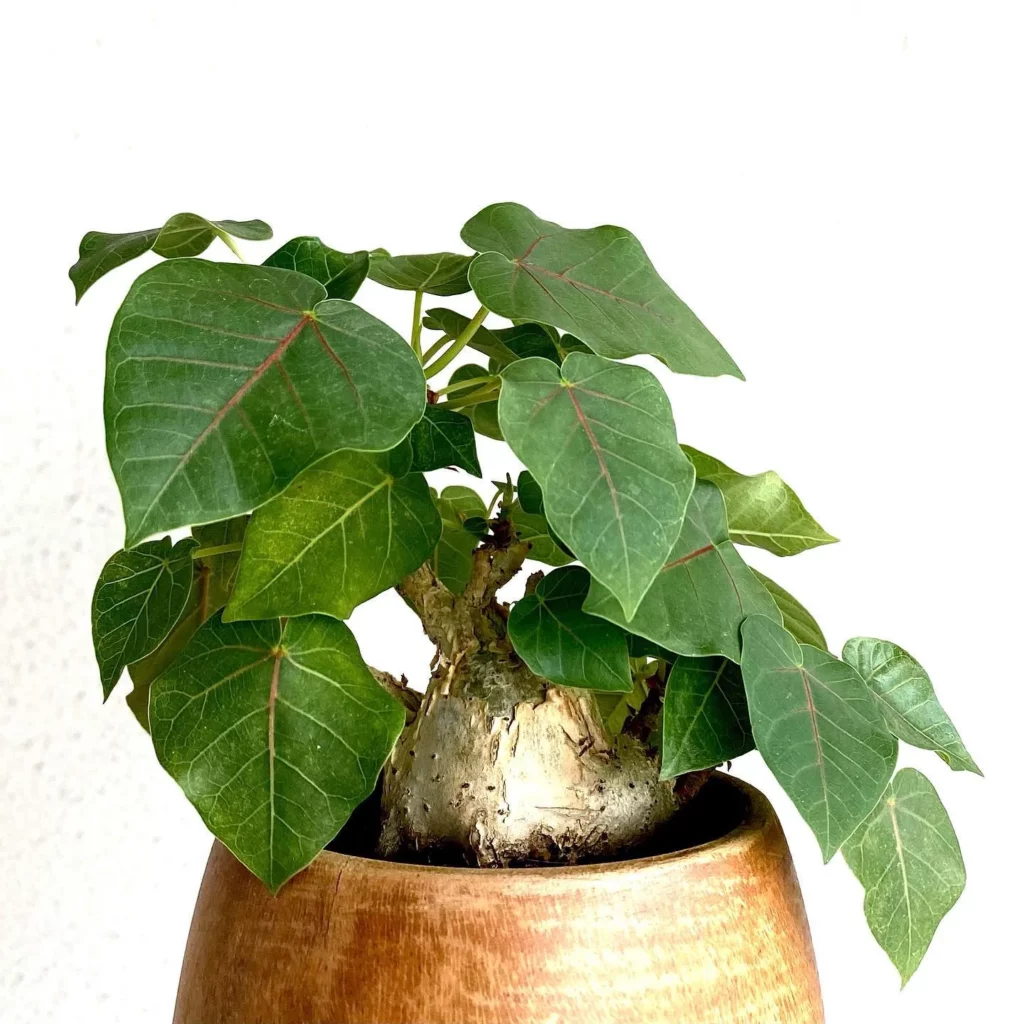
If you wish to expand your collection of Ficus petiolaris or share this beautiful plant with others, propagation is an excellent way to achieve that. Propagating Ficus petiolaris can be done through various methods, including seed propagation.
To propagate Ficus petiolaris from seeds, start by collecting ripe fruits from the plant. Remove the seeds from the fruits and soak them in warm water for 24 hours to soften their outer coating.
After soaking, sow the seeds in a well-draining potting mix, covering them lightly with soil. Keep the soil consistently moist and place the pot in a warm location with indirect sunlight.
Another method of propagating Ficus petiolaris is through stem cuttings. Take a healthy cutting from the plant, ensuring it has at least two nodes.
Remove the lower leaves, leaving only a few leaves at the top. Dip the cut end of the stem in a rooting hormone and plant it in a pot filled with well-draining soil or a mixture of perlite and peat moss.
Keep the soil consistently moist and provide indirect sunlight for successful rooting.
Propagation Tips:
- Collect ripe fruits and soak the seeds in warm water before sowing.
- Use a well-draining potting mix for seed propagation.
- Take stem cuttings with at least two nodes for successful rooting.
- Dip the cut ends in a rooting hormone to promote root development.
- Keep the soil consistently moist and provide indirect sunlight for optimal growth.
Quick Care Overview for Rock Fig
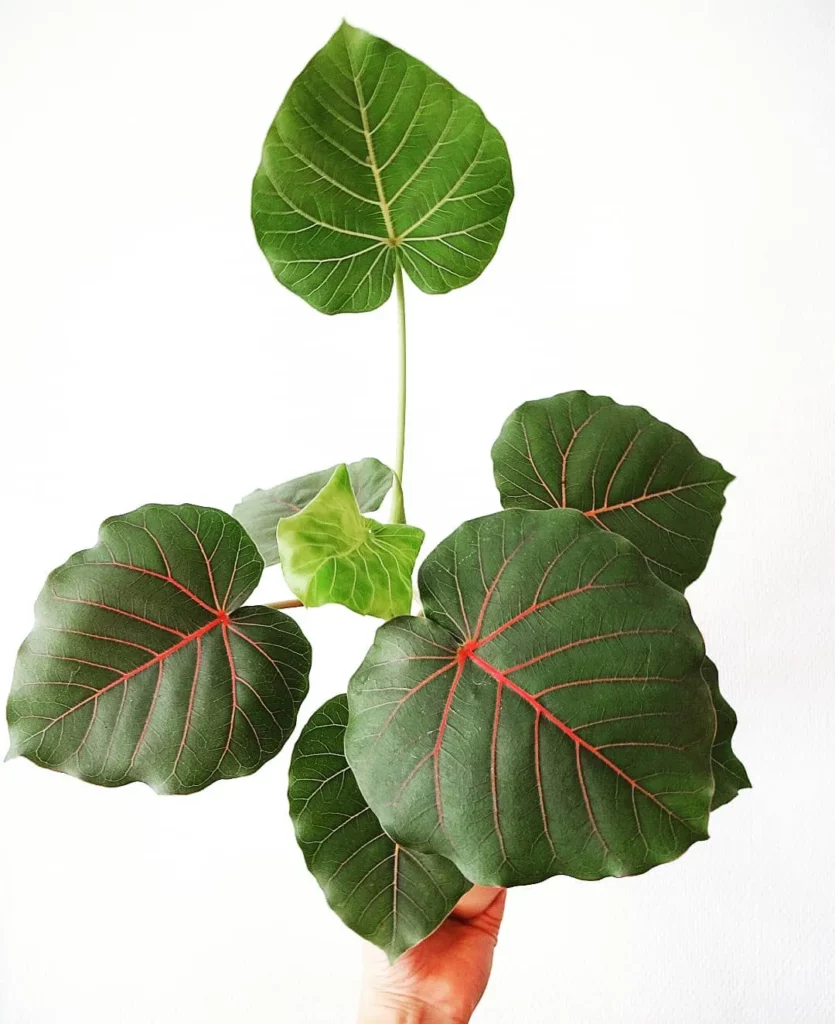
To make caring for your Rock Fig as easy as possible, here is a quick overview of the essential care aspects you need to keep in mind.
Light Requirements: Rock Fig plants prefer moderate sunlight and partial shade. Place them in a location where they can receive a few hours of direct sunlight each day, but avoid exposing them to intense, direct sunlight for extended periods.
Watering: Consistent watering is crucial for Rock Fig plants. Keep the soil consistently moist, but not overly saturated. Avoid letting the soil completely dry out between waterings, as this can lead to stress and leaf drop.
Soil and Potting: Use well-drained soil or potting mix for your Rock Fig. This ensures proper drainage and prevents waterlogging, which can cause root rot. When repotting, choose a container that allows for growth and has drainage holes.
Pruning and Shaping:
“Timely pruning enhances the Rock Fig’s ornamental value and improves air ventilation and light transmission. Wear garden gloves as the branches release milky sap when cut.”
Regular pruning is essential for the health and appearance of Rock Fig plants. It encourages the growth of side branches and helps maintain a compact shape.
To prune, pinch the tips of the branches when they reach about 60 cm in height. This will prompt the sprouting of axillary buds and help retain 3-4 side branches as lateral main branches.
When pruning Rock Fig, it is advisable to wear garden gloves as the branches release milky sap when cut.
Light Requirements for Ficus petiolaris
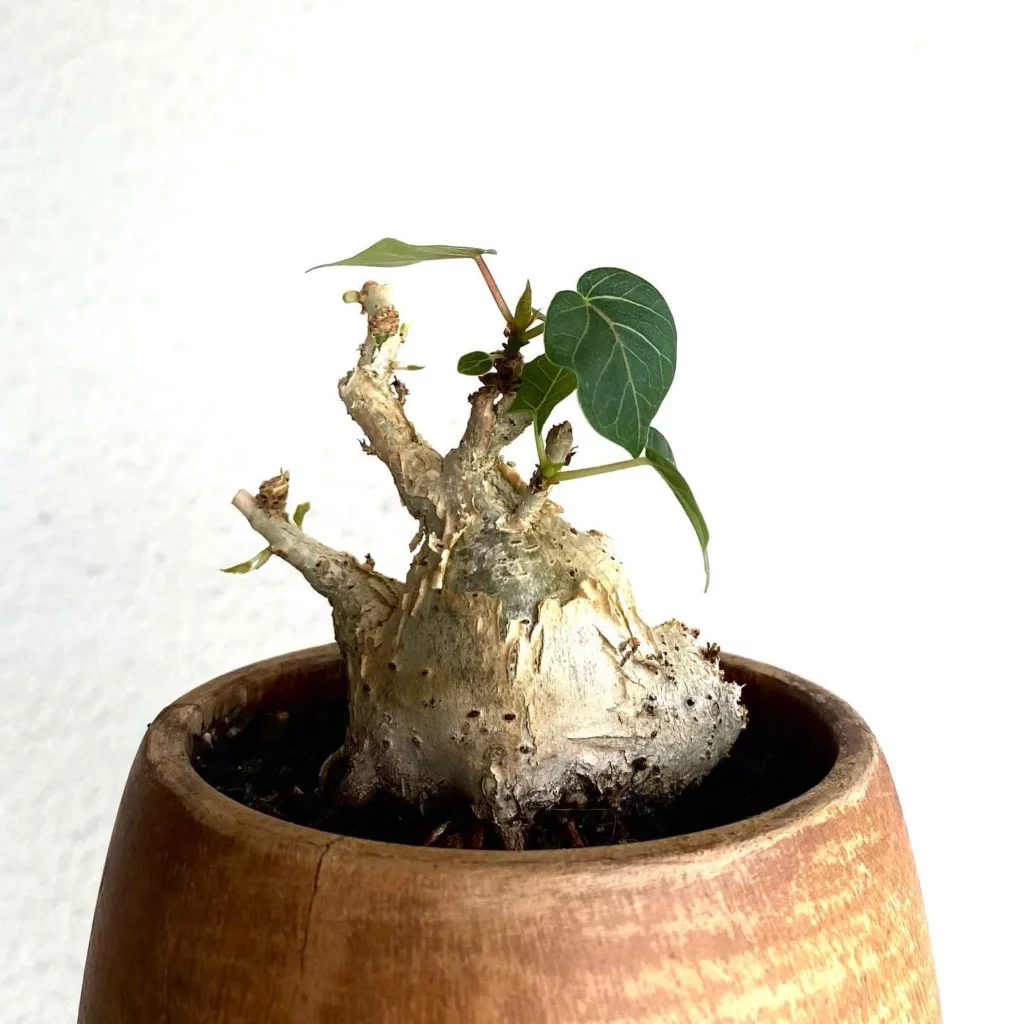
Adequate light is crucial for the health and vitality of your Ficus petiolaris, and understanding its light requirements will help you create the ideal growing conditions.
This species thrives in bright, indirect light, so placing it near a window with filtered sunlight or in a well-lit room is ideal. Avoid exposing it to direct, intense sunlight, as this can scorch the leaves and cause damage.
To ensure your Ficus petiolaris receives sufficient light, rotate it every few weeks to allow all sides of the plant to receive equal exposure. This will help prevent the plant from leaning towards the light source and promote even growth.
If your indoor space lacks ample natural light, you can supplement with artificial lighting using fluorescent or LED grow lights. Position the lights about 12-18 inches above the plant for optimal results.
It’s important to note that Ficus petiolaris can tolerate lower light conditions for short periods, but prolonged low light exposure may lead to leggy growth and a weakened plant.
Be attentive to any signs of inadequate lighting, such as pale or yellowing leaves, and adjust the plant’s position accordingly.
Soil Requirements for Rock Fig
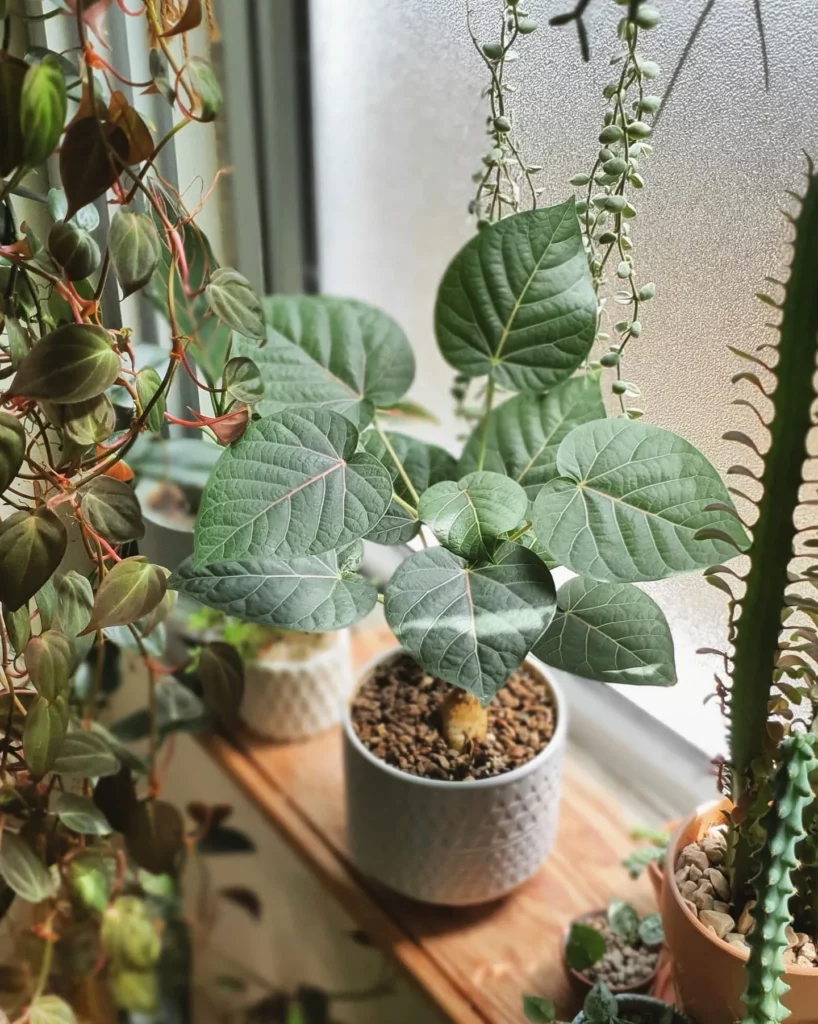
Choosing the right soil and understanding its requirements is key to providing your Rock Fig with the optimal growing environment. Ficus petiolaris, also known as Petiolate Fig, thrives in well-drained soil or potting mix.
This type of soil allows for proper water drainage and prevents the roots from sitting in excessively moist conditions, which can lead to root rot and other plant health issues.
An ideal soil mix for Rock Fig consists of a combination of organic matter such as peat moss or compost, along with perlite or vermiculite to improve drainage. This ensures that the roots have access to adequate oxygen and prevents waterlogged soil, which can suffocate the plant.
When potting your Rock Fig, make sure to choose a container with drainage holes to further facilitate proper drainage. This will prevent excess water from accumulating in the pot and causing root problems.
Regularly check the soil moisture level by inserting your finger about an inch into the soil. If it feels slightly dry, it’s time to water the plant.
Potting and Repotting Ficus petiolaris
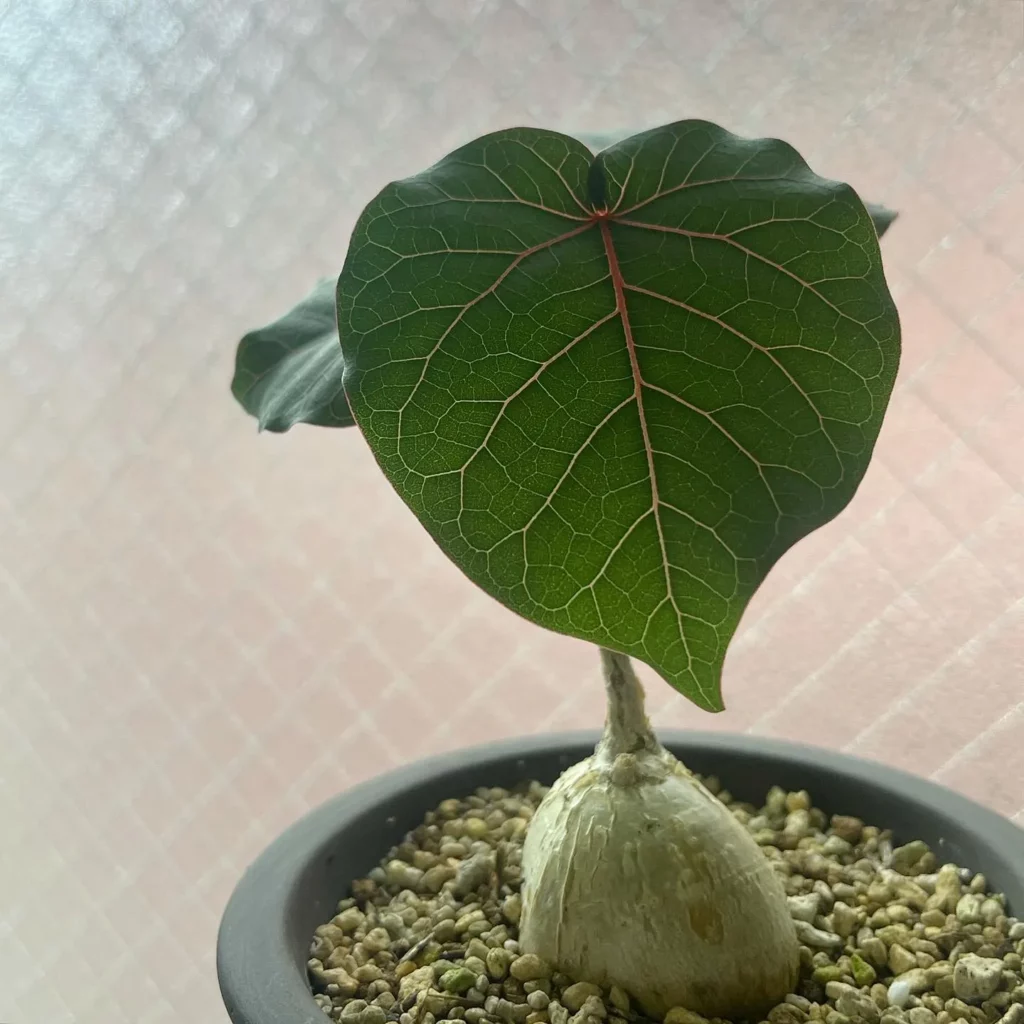
Learn how to pot and repot your Ficus petiolaris effectively to provide it with adequate space and nutrients for healthy growth. Potting and repotting are essential steps in the care of this beautiful plant, ensuring that it thrives in its container environment.
When potting your Ficus petiolaris, choose a pot that is slightly larger than the current one to allow room for root growth. Use a well-drained soil or potting mix to promote healthy root development.
Place a layer of small stones or pebbles at the bottom of the pot to improve drainage.
To repot your Ficus petiolaris, carefully remove it from its current pot, gently loosening the roots. Inspect the roots for any signs of damage or disease, and trim away any dead or decaying roots.
Place the plant in its new pot, ensuring that it is centered and at the same depth as before. Fill the remaining space with fresh potting mix, lightly pressing it down to secure the plant.
After potting or repotting, water the Ficus petiolaris thoroughly, allowing the excess water to drain away. Ensure that the soil is evenly moist but not waterlogged.
Regularly check the moisture level and water when the top inch of soil feels dry to the touch.
Pruning and Shaping Ficus petiolaris
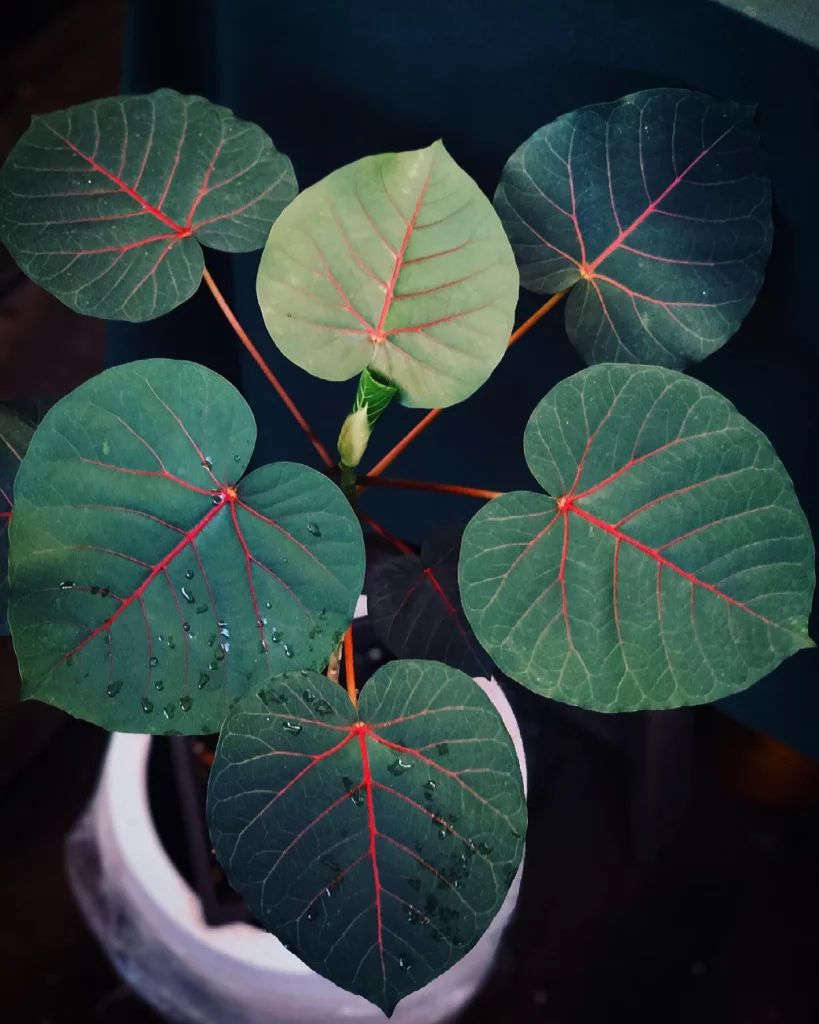
Pruning and shaping your Ficus petiolaris not only promotes its overall health but also enhances its aesthetic appeal. By following proper pruning techniques, you can encourage the growth of side branches and retain a desirable shape for your Rock Fig.
Timing is crucial when it comes to pruning, and it is recommended to start when the plant reaches about 60 cm in height. This allows axillary buds to sprout quickly, resulting in the development of 3-4 side branches as lateral main branches.
Regular pruning also improves air ventilation and light transmission within the plant, which is essential for maintaining its health. However, it’s important to wear garden gloves while pruning as the branches of Ficus petiolaris leak a milky sap when cut.
Pruning should be done with clean, sharp tools to ensure smooth cuts and minimize damage to the plant.
Ficus petiolaris, also known as Petiolate Fig, is native to arid regions of Mexico and can grow up to 10-20 feet tall. It features heart-shaped green leaves with pink veins on the upper side, adding a touch of elegance to any indoor or outdoor space.
This plant thrives in moderate sun and partial shade, making it a versatile choice for various lighting conditions.
Pruning Tips for Ficus petiolaris:
- Start pruning when your Ficus petiolaris reaches about 60 cm in height.
- Encourage the growth of side branches by allowing axillary buds to sprout quickly.
- Retain 3-4 side branches as lateral main branches for a desirable shape.
- Wear garden gloves to protect your hands from the milky sap that leaks from the branches.
- Use clean, sharp tools for pruning to ensure smooth cuts and minimize damage.
Temperature Requirements for Rock Fig
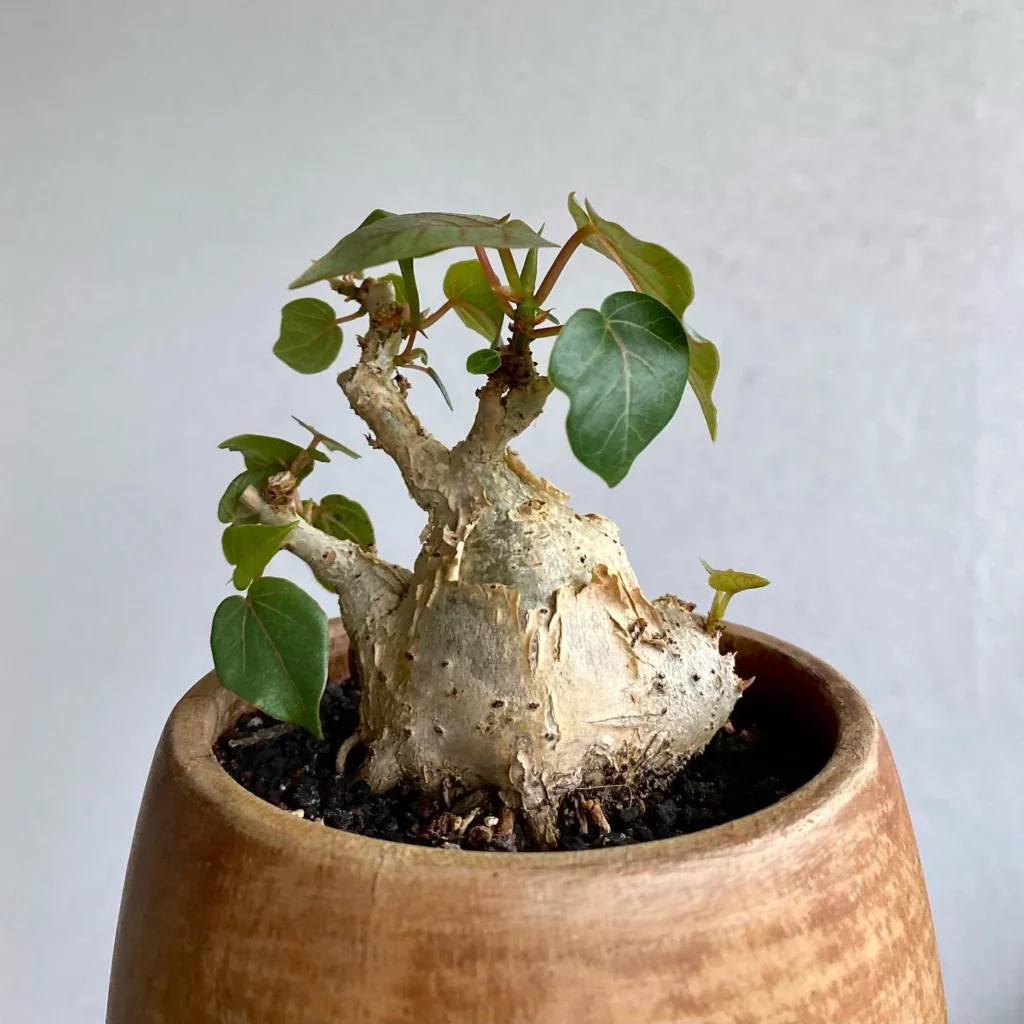
Understanding the temperature preferences of your Rock Fig is crucial for creating a suitable environment that supports its growth and well-being. Being native to arid regions of Mexico, Ficus petiolaris thrives in warm temperatures.
The ideal temperature range for this plant is between 60°F (15°C) and 80°F (27°C), making it well-suited for indoor cultivation in most regions. However, it’s important to note that Rock Fig is susceptible to frost damage, particularly in hardiness zone 10 and below.
During the winter months, when temperatures can drop below freezing in these zones, it’s essential to provide frost protection for your Rock Fig.
This can be achieved by moving the plant indoors or placing it in a protected area, such as a greenhouse or covered patio. If bringing the plant indoors, ensure it is placed near a bright window to receive adequate light.
For best results, maintain a consistent temperature and avoid exposing the plant to drastic temperature fluctuations.
Rock Fig responds well to moderate temperatures and can tolerate some heat, but extreme heat or prolonged exposure to temperatures above 90°F (32°C) can be detrimental to its overall health.
Humidity Requirements for Ficus petiolaris

Proper humidity levels play a vital role in the health and thriving of your Ficus petiolaris, and understanding its requirements will help you provide the ideal conditions.
This native of arid regions in Mexico appreciates moderate humidity, but excessive moisture can lead to issues such as root rot and fungal diseases. Maintaining a relative humidity range of 40-60% is recommended for optimal growth.
To create a suitable environment for your Ficus petiolaris, you can employ several methods to increase humidity. One effective approach is placing the plant’s pot on a tray filled with water and pebbles.
As the water evaporates, it increases the humidity around the plant. Alternatively, you can use a humidifier or mist the leaves regularly to mimic the plant’s natural habitat.
It’s important to monitor the humidity levels consistently. If the air becomes too dry, you may notice leaf curling or browning. On the other hand, excessive humidity can result in leaf yellowing or a sticky residue on the foliage.
Watering and Fertilizing Ficus petiolaris
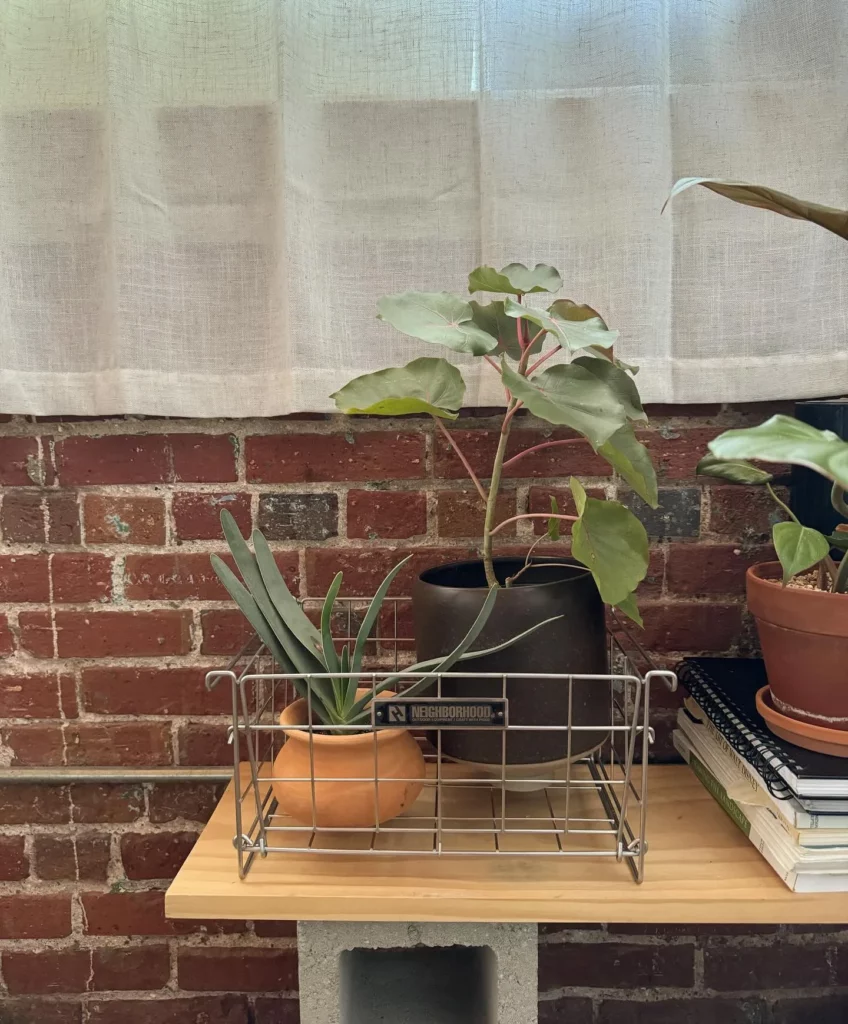
Proper watering and fertilization are essential to ensure the long-term health and vitality of your Ficus petiolaris. These practices play a crucial role in maintaining optimal growth, preventing nutrient deficiencies, and promoting overall plant well-being.
When it comes to watering your Ficus petiolaris, consistency is key. The plant prefers moist soil but does not tolerate waterlogged conditions.
Allow the top inch of soil to dry out between waterings, and then water thoroughly until water drains from the bottom of the pot. It’s important to strike a balance and avoid letting the soil completely dry out or become soggy.
In terms of fertilization, Ficus petiolaris benefits from regular feeding during the growing season. A balanced, slow-release fertilizer is recommended, applied according to the package instructions.
Pest Control and Common Problems
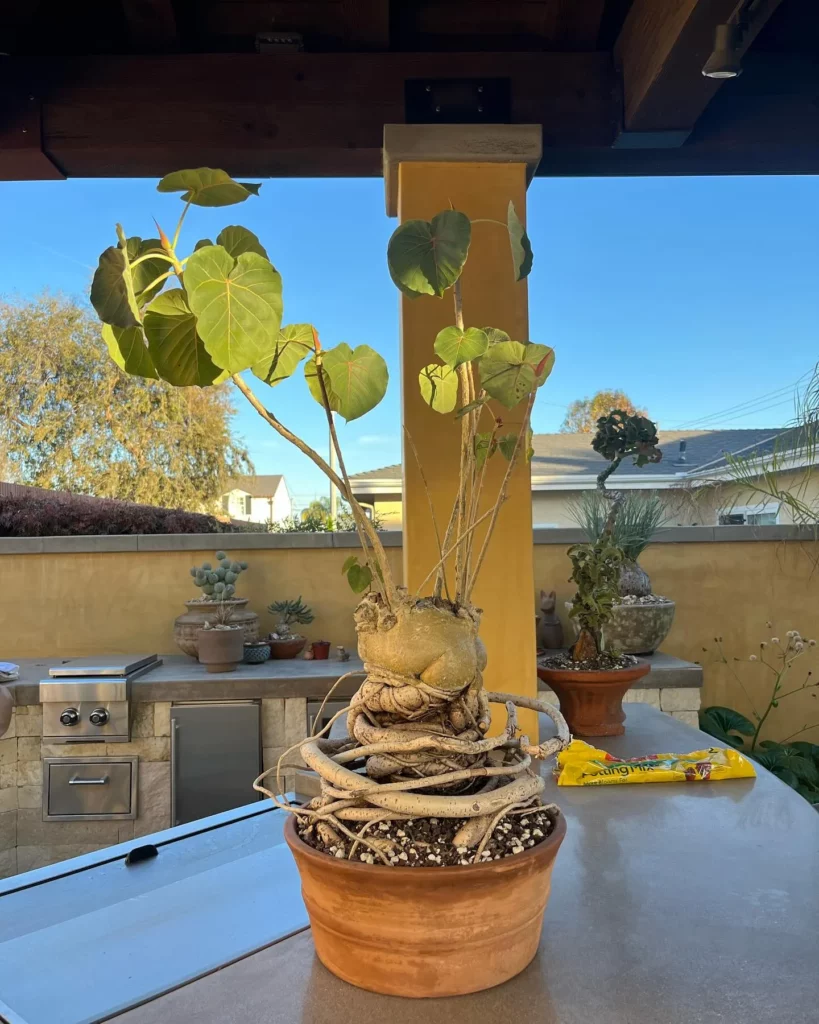
Learn how to keep your Ficus petiolaris healthy and pest-free by implementing effective pest control measures and addressing common problems that may arise.
Ficus petiolaris, also known as Rock Fig or Petiolate Fig, is a resilient plant but can still face some challenges. By being proactive and taking the necessary steps, you can ensure your Rock Fig thrives in its environment.
Pest Control
Despite its hardiness, Rock Fig can occasionally be susceptible to pests. The most common pests that may affect Ficus petiolaris include aphids, scale insects, and spider mites.
To address these pests, it is crucial to regularly inspect your plant for any signs of infestation.
If you notice small, green or black insects feeding on the leaves or a sticky residue on the foliage, it may be an indication of an aphid infestation. Use a mild soap solution or horticultural oil to control these pests.
Scale insects, which appear as small bumps on stems and leaves, can be removed by gently scraping them off or by using an insecticidal soap. Spider mites, tiny arachnids that leave fine webbing and cause stippling on leaves, can be controlled by spraying the plant with water or using an insecticidal soap.
Common Problems
While Rock Fig is generally a resilient plant, it can face some common problems that require attention. Overwatering is a common issue that can lead to root rot and other fungal diseases. Ensure proper drainage by using well-draining soil and avoid overwatering to prevent these problems.
Another common problem is leaf drop, which can occur due to environmental changes, stress, or inadequate light. Adjust the plant’s location to provide medium to bright indirect light and avoid sudden temperature fluctuations or drafts.
Lastly, Ficus petiolaris may experience yellowing or browning of leaves, which can indicate nutrient deficiencies or improper watering. Regularly fertilize the plant using a balanced fertilizer and monitor soil moisture levels to maintain optimal health.
Conclusion
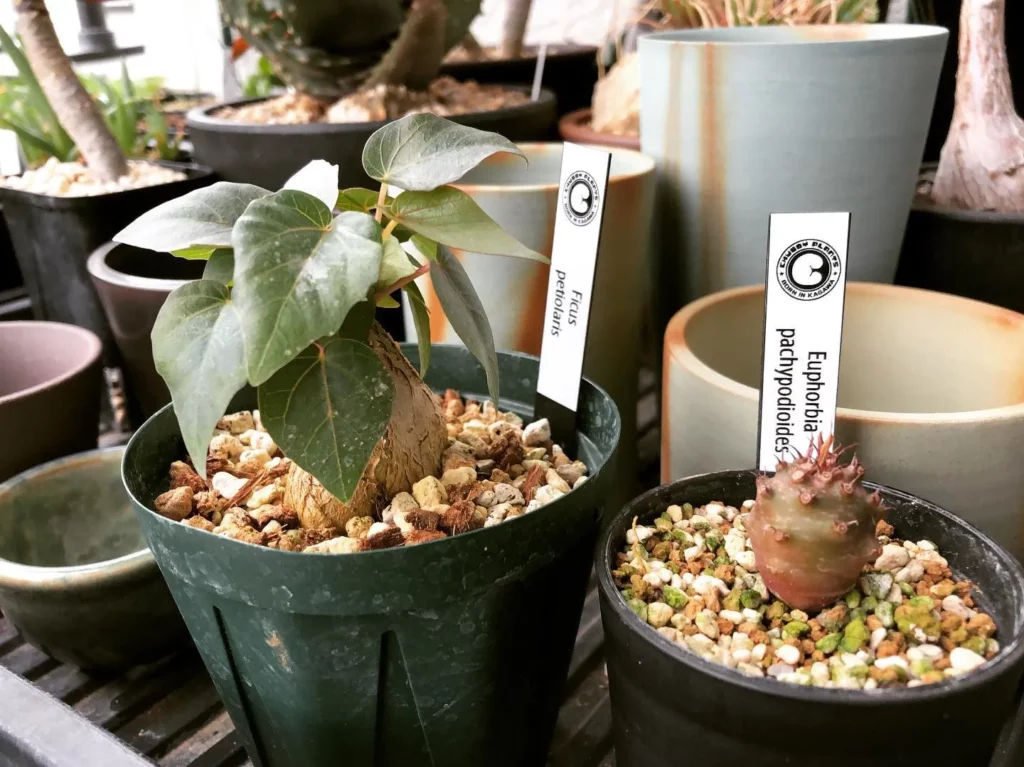
Congratulations! You now have all the knowledge and tools you need to ensure the successful care of your Ficus petiolaris, also known as Rock Fig.
This comprehensive care guide has covered all aspects of caring for this unique plant, from understanding its native habitat and characteristics to providing the ideal growing conditions.
To enhance the ornamental value of your Ficus petiolaris, regular pruning is essential. Timely pruning encourages the growth of side branches and improves air ventilation and light transmission.
Remember to wear garden gloves, as the branches of Rock Fig leak milky sap when cut. By following the pruning tips provided in this guide, you can promote the healthy growth and overall appearance of your plant.
In addition to pruning, other care requirements for Ficus petiolaris include providing moderate sun and partial shade, consistent watering to avoid soil dryness, and using well-drained soil or potting mix.
It’s important to protect your Rock Fig from frost if you live in hardiness zone 10. By meeting these specific care needs, you can create an optimal environment for your Ficus petiolaris to thrive.
The Ultimate Ficus petiolaris Care Guide also covers important topics such as propagation, light requirements, potting and repotting, temperature tolerance, humidity preferences, watering and fertilizing techniques, as well as pest control.
With this comprehensive knowledge at your disposal, you can confidently care for your Ficus petiolaris and enjoy its beauty for years to come.
Make sure to check out our article on Ficus triangularis Variegata Care Guide. And after reading that Ficus article, check out our article on Ficus natalensis subsp. leprieurii Care Guide.
FAQ
Q: When should I prune my Ficus petiolaris?
A: Pruning should be done when the plant reaches about 60 cm in height. This encourages the growth of side branches and enhances the plant’s ornamental value.
Q: How many side branches should I retain during pruning?
A: It is recommended to retain 3-4 side branches as lateral main branches during pruning.
Q: Why is pruning important for Ficus petiolaris?
A: Regular pruning improves air ventilation and light transmission, promoting healthy growth and overall plant vitality.
Q: Does Ficus petiolaris require full sun or partial shade?
A: Ficus petiolaris requires moderate sun and partial shade to thrive.
Q: How often should I water my Ficus petiolaris?
A: Consistent watering is necessary for Ficus petiolaris. Avoid letting the soil completely dry out between waterings.
Q: What type of soil is best for Ficus petiolaris?
A: Well-drained soil or potting mix is recommended for Ficus petiolaris.
Q: How should I protect my Ficus petiolaris from frost?
A: In hardiness zone 10, it is important to protect Ficus petiolaris from frost by providing appropriate shelter or moving the plant indoors during colder periods.
Q: How can I propagate Ficus petiolaris?
A: Ficus petiolaris can be propagated through seeds. More information on propagation techniques can be found in the care guide.
Q: Does Ficus petiolaris flower in cultivation?
A: Strangler figs, including Ficus petiolaris, rarely flower in cultivation.
Q: Are there any specific care requirements during dormancy?
A: The care guide provides information on the dormancy requirements of Ficus petiolaris, ensuring the plant receives proper care during this period.

